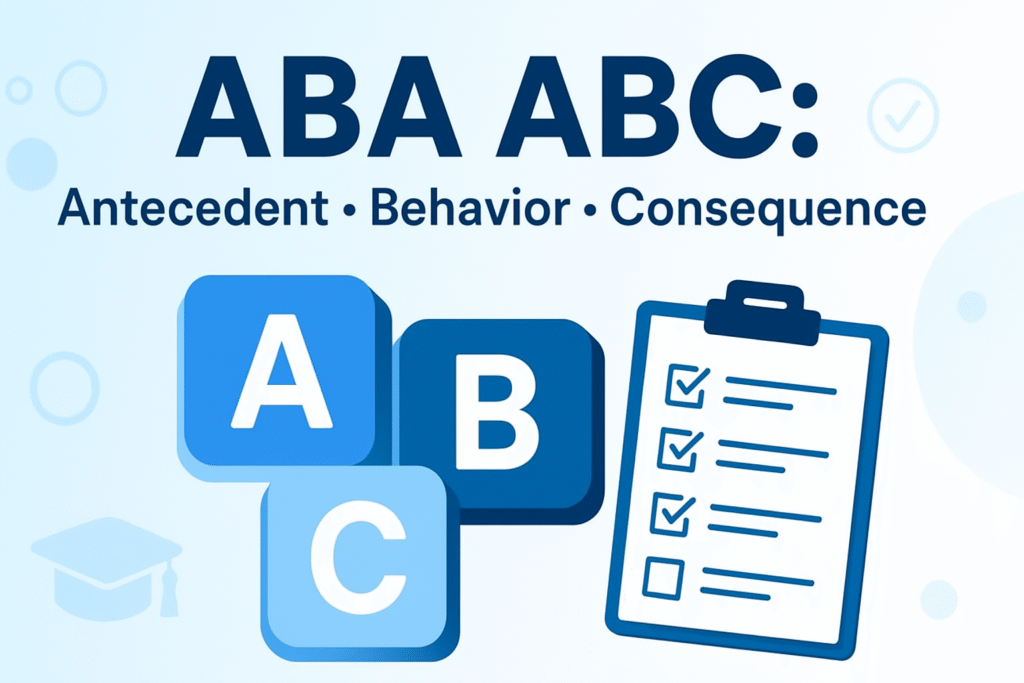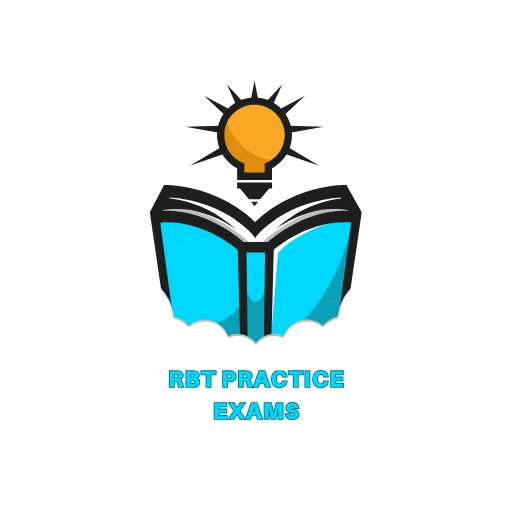If you’re new to ABA ABC, you might be wondering what those three letters really mean. In Applied Behavior Analysis (ABA), the term “ABC” stands for Antecedent, Behavior, Consequence. It’s one of the most widely used tools for understanding why behaviors happen and how they can be changed. Whether you’re preparing for your RBT exam, working with children, or simply curious about ABA, learning the ABC model is a key step in understanding human behavior.
Table of Contents

What Does ABA ABC Mean?
In Applied Behavior Analysis, the ABC model helps us look at behavior in a structured way. By breaking down what happens before, during, and after a behavior, we can understand why it happens and how to respond effectively.
A = Antecedent what happens before the behavior.
B = Behavior the specific action or response.
C = Consequence what happens after the behavior.
This simple framework has become a cornerstone in ABA and is often tested in the rbt practice exam
Breaking Down the ABC Model Antecedent
The antecedent is any trigger that sets the stage for a behavior. It could be a request, an environmental cue, or even a thought. For example, a teacher asking a student to complete homework is an antecedent.
Behavior
The behavior is the observable action. In our example, the student may start working, ignore the teacher, or throw the homework on the floor. ABA focuses on observable actions, not assumptions about feelings.
Consequence
The consequence is what follows the behavior. It could be positive reinforcement, negative reinforcement, or punishment. If the student throws the homework and the teacher removes the task, that consequence increases the chance of escape behavior in the future.
Why Is the ABA ABC Model Important?
The ABA ABC model is not just a theory it’s a practical tool. By analyzing antecedents and consequences, practitioners can identify why behaviors occur and how to shape them more effectively.
Here’s why it matters:
Clarity: It provides a structured way to look at behavior.
Intervention planning: Helps ABA therapists design effective strategies.
Positive outcomes: Encourages reinforcement of desirable behavior.
RBT exam relevance: You’ll find ABC related questions on any rbt practice test .
ABA ABC in Real-Life Examples
Let’s bring the model to life with a few relatable examples.
Classroom Example
Antecedent: Teacher asks a student to read aloud.
Behavior: Student puts their head down.
Consequence: Teacher moves on to another student Result: Avoidance is reinforced.
Home Example
Antecedent: Parent says “Clean your room.”
Behavior: Child whines and refuses.
Consequence: Parent cleans the room instead. Result: Child learns whining removes the task.
Therapy Example
Antecedent: Therapist presents a puzzle.
Behavior: Client starts working and completes it.
Consequence: Therapist praises and gives a favorite toy Result: Puzzle completion is reinforced.
These real-world scenarios highlight how ABA ABC can be applied across different settings.
ABA ABC and RBT Exam Prep
If you’re studying for your RBT certification, understanding the ABC model is non-negotiable. The BACB includes ABA ABC principles in its competency areas, which means you’ll definitely encounter them on the exam.
Here’s how you can prepare:
Practice identifying antecedents, behaviors, and consequences in sample questions.
Take a rbt mock test to strengthen recall.
Use rbt practice exams regularly to get comfortable with ABC related scenarios.
Not only will this improve your test performance, but it will also help you apply ABA skills in real-world situations.
FAQs About ABA ABC What does ABC stand for in ABA?
ABC in ABA stands for Antecedent, Behavior, Consequence. It’s a tool for analyzing why behaviors happen.
Why is the ABC model used in ABA therapy?
It helps practitioners identify triggers and outcomes, making it easier to design effective interventions.
Is ABC analysis part of the RBT exam?
Yes, understanding the ABA ABC model is essential for passing your RBT exam. You’ll find related questions in most rbt practice tests .
Can parents use the ABA ABC method at home?
Absolutely. Parents can use ABC analysis to understand and manage challenging behaviors in everyday routines.
Conclusion: Mastering ABA ABC Starts with Practice
The ABA ABC model is a powerful yet simple way to understand behavior. By learning how antecedents, behaviors, and consequences connect, you’ll be better prepared for real-world applications and your RBT exam.
If you’re serious about becoming an RBT, the best next step is practice. Start today with a rbt practice exam and build the confidence you need to succeed.
